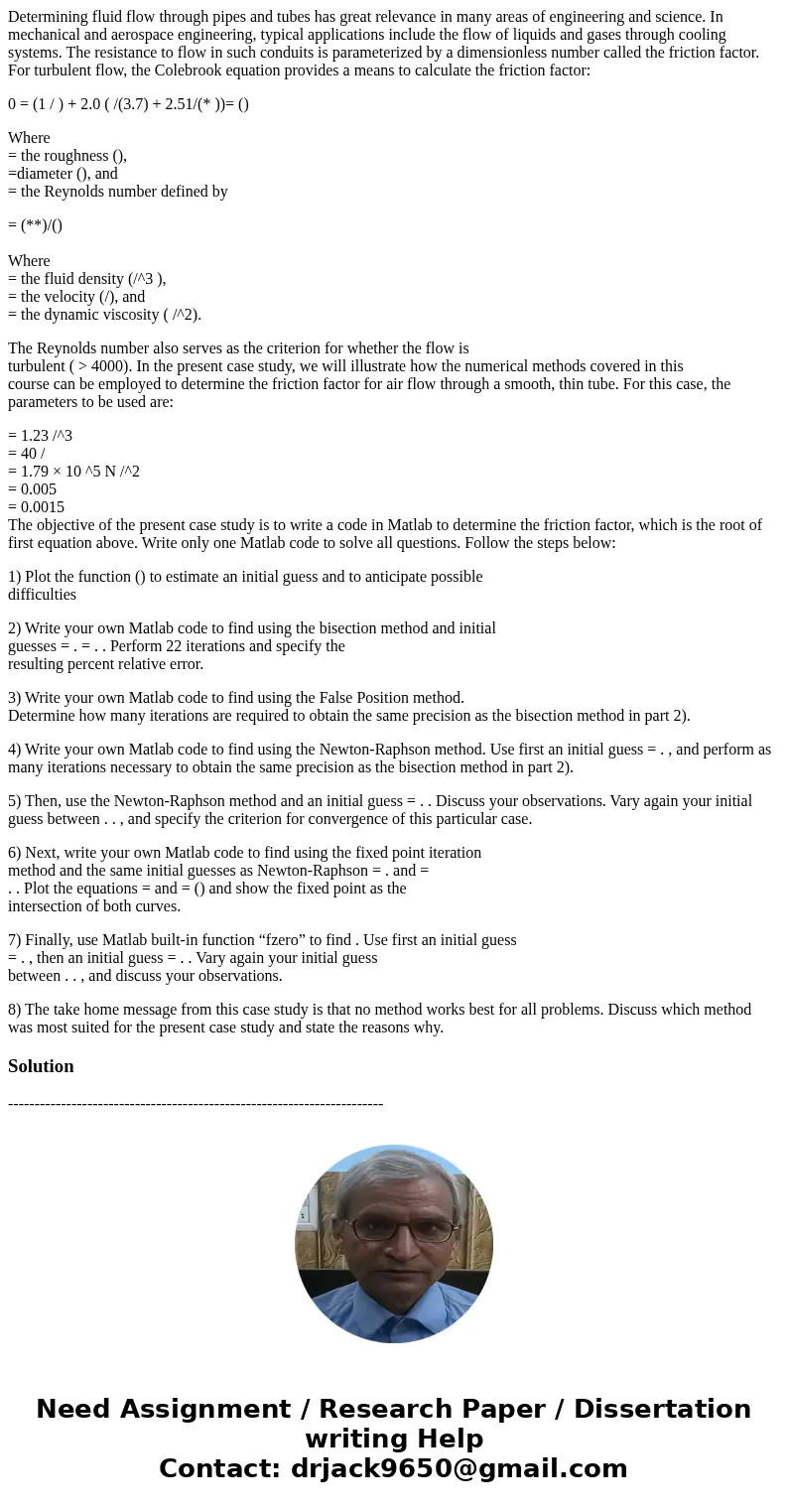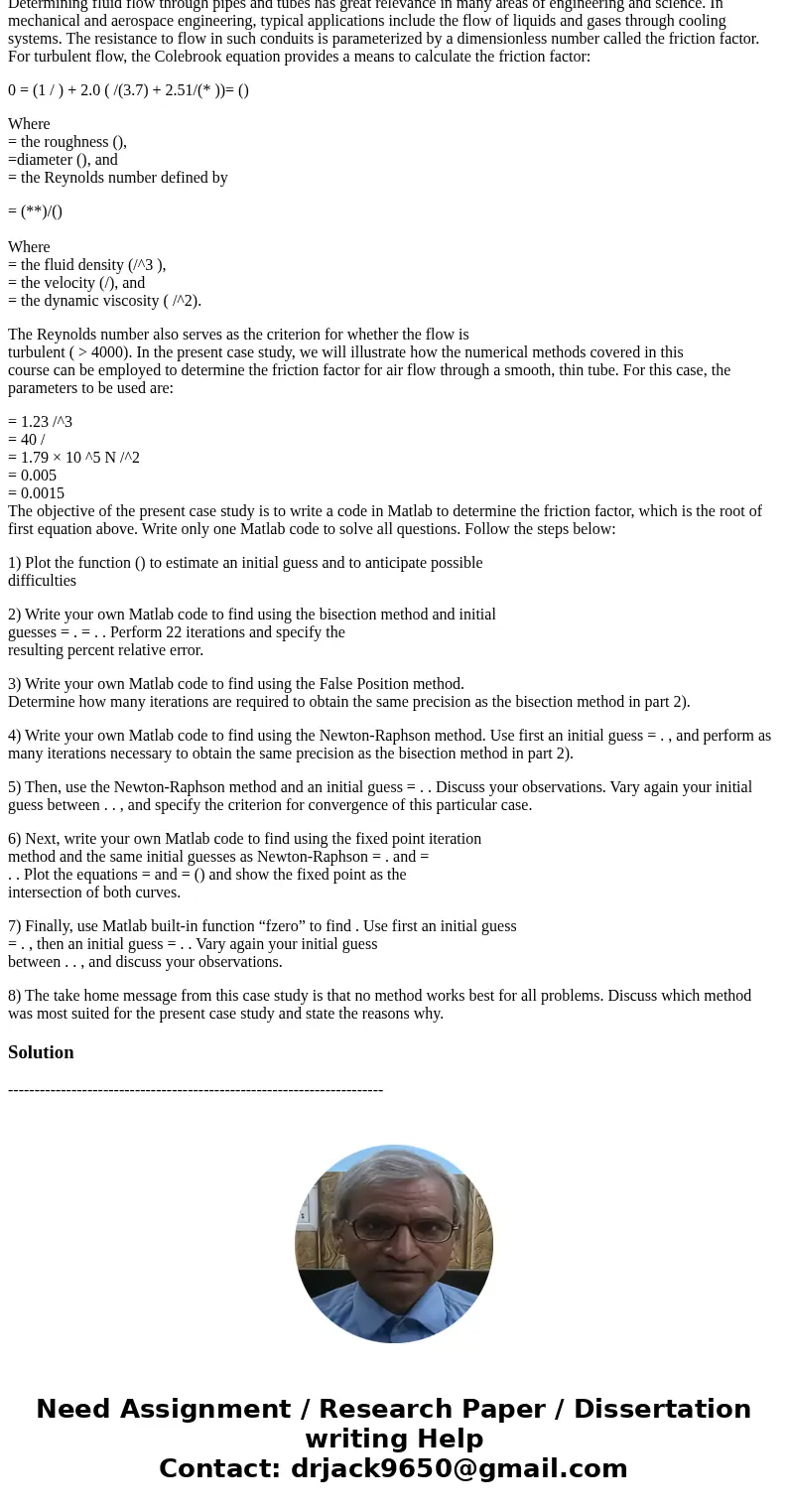Determining fluid flow through pipes and tubes has great rel
Determining fluid flow through pipes and tubes has great relevance in many areas of engineering and science. In mechanical and aerospace engineering, typical applications include the flow of liquids and gases through cooling systems. The resistance to flow in such conduits is parameterized by a dimensionless number called the friction factor. For turbulent flow, the Colebrook equation provides a means to calculate the friction factor:
0 = (1 / ) + 2.0 ( /(3.7) + 2.51/(* ))= ()
Where
= the roughness (),
=diameter (), and
= the Reynolds number defined by
= (**)/()
Where
= the fluid density (/^3 ),
= the velocity (/), and
= the dynamic viscosity ( /^2).
The Reynolds number also serves as the criterion for whether the flow is
turbulent ( > 4000). In the present case study, we will illustrate how the numerical methods covered in this
course can be employed to determine the friction factor for air flow through a smooth, thin tube. For this case, the parameters to be used are:
= 1.23 /^3
= 40 /
= 1.79 × 10 ^5 N /^2
= 0.005
= 0.0015
The objective of the present case study is to write a code in Matlab to determine the friction factor, which is the root of first equation above. Write only one Matlab code to solve all questions. Follow the steps below:
1) Plot the function () to estimate an initial guess and to anticipate possible
difficulties
2) Write your own Matlab code to find using the bisection method and initial
guesses = . = . . Perform 22 iterations and specify the
resulting percent relative error.
3) Write your own Matlab code to find using the False Position method.
Determine how many iterations are required to obtain the same precision as the bisection method in part 2).
4) Write your own Matlab code to find using the Newton-Raphson method. Use first an initial guess = . , and perform as many iterations necessary to obtain the same precision as the bisection method in part 2).
5) Then, use the Newton-Raphson method and an initial guess = . . Discuss your observations. Vary again your initial guess between . . , and specify the criterion for convergence of this particular case.
6) Next, write your own Matlab code to find using the fixed point iteration
method and the same initial guesses as Newton-Raphson = . and =
. . Plot the equations = and = () and show the fixed point as the
intersection of both curves.
7) Finally, use Matlab built-in function “fzero” to find . Use first an initial guess
= . , then an initial guess = . . Vary again your initial guess
between . . , and discuss your observations.
8) The take home message from this case study is that no method works best for all problems. Discuss which method was most suited for the present case study and state the reasons why.
Solution
-----------------------------------------------------------------------


 Homework Sourse
Homework Sourse